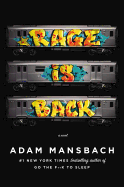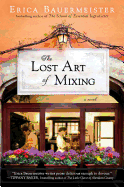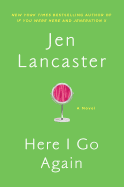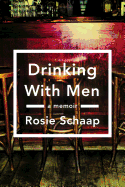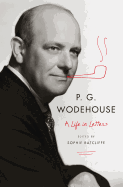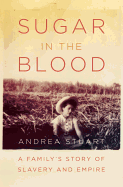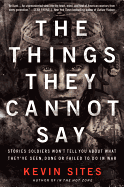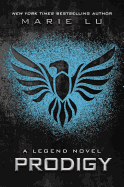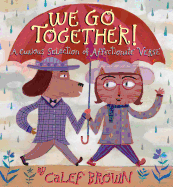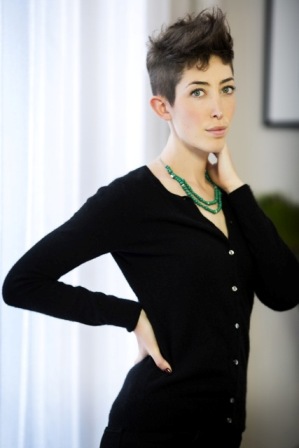 |
| Photo: Terry Gruber |
The Jujitsu Rabbi and the Godless Blonde by Rebecca Dana (just out from Amy Einhorn Books) is a self-effacing, engaging, utterly compelling coming-of-age tale about a hip Manhattanite in her late 20s who goes through a heart-crushing breakup, moves to Brooklyn's Crown Heights neighborhood (the Lubavitcher capital of the world) into a run-down apartment with a renegade Orthodox rabbi, takes meticulous notes and turns a 90-page draft into a memoir. It makes for one compelling story.
Chronicling her year in Crown Heights, Dana (who's now a brunette), formerly a journalist with the Daily Beast and the Wall Street Journal, saw writing this book as therapy.
She recalled: "I wrote the book after a terrible breakup. I was a mess and needed to move out of my apartment. I found a room to rent from a rabbi named Cosmo. I wrote the first draft of the book while I was living it, which is an insane thing to do. My old boss Peter Kaplan said throw yourself into your work. So I wrote a 90-page stream of consciousness, and I got a two-book deal off of that."
Dana, who grew up in Pittsburgh, said, "When you are a journalist and an opportunist, in this crazy living situation and going through a life crisis--well, I just knew there was a book in it. I was taking notes the whole time and my roommate was aware of it. He said you should put this in a book! I would recommend this to anyone going through a life crisis.
"Actually living in the moment gives you this wonderful degree of distance from the person you actually are. I would go about my life as Rebecca, and then I would sit in front of my computer and write about the character of Rebecca. It was all true, but I had this artistic distance from it. So I got some peace not experiencing all this heartbreak and confusion first-hand all the time, but rather writing about a person who was experiencing it," she explained.
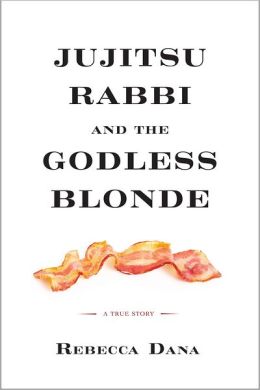 "Once I moved in, I thought: I'm going to give this a year. It was an insane experience, but I felt like I was going to learn a lot from it. I was totally outside of my comfort zone, and I think that's a healthy place to be. But then, about seven months later, a mouse ran across my pillow and I was out of there."
"Once I moved in, I thought: I'm going to give this a year. It was an insane experience, but I felt like I was going to learn a lot from it. I was totally outside of my comfort zone, and I think that's a healthy place to be. But then, about seven months later, a mouse ran across my pillow and I was out of there."
In retrospect, Dana said, "It was a nightmare--it took years off my life. But it was also incredible. It's rare that you do something wild and insane. It was such a breakneck crazy thing that I was barely aware of it until it was over."
Dana was raised in a Reform Jewish household, which is to say, secular compared to those in Crown Heights. In many ways, the society she encountered there was foreign to her. "I had all these instinctive prejudices against these people without really knowing anything about them. I wanted to distance myself from them. We feel like we are enlightened and sophisticated and that they are living in this very old world backward style. So I thought, if I'm going to live in this community and feel anxious and judgmental, I should try to understand them better."
Dana isn't the only one having a difficult time. Cosmo is going through an identity crisis. He's not sure he wants to be a rabbi and he's not even sure he wants to be an Orthodox Jew. Much of the warm humor in the book comes from Dana taking Cosmo to her fashionable parties and introducing him to non-kosher food, and Cosmo bringing Dana to Shabbat dinners and introducing her to women her age who have seven children. The ensuing encounters are enlightening for both of them.
While it's not exactly a cliff-hanger, the reader does wonder if her soul-searching might turn her toward the religious community. After living among the Orthodox, Dana "chose not to live my life the way they do, but I'm glad I made an effort to understand them. I met incredible people there who are really happy. I met some of the loveliest, smartest, thoughtful women in that community. There is an incredible sisterhood there."
The strength of community that Dana experienced apparently rubbed off on her. After realizing that maybe she wasn't living up to her potential covering shoes and handbags and celebrity lifestyle, Dana left the Daily Beast to concentrate on volunteer work and on other book projects. She explained, "The question of service really nagged at me, of doing something other then making myself prettier and more successful and better in every way or trying to make myself the person I really wanted to be." And her personal life also took a turn--she is now happily married.
Dana seems satisfied with this new phase of her life. "I've left the fancy glittering N.Y.C. media job and replaced it with a much less glamorous job volunteering. My job was fun in some respects, and soul crushing and unfulfilling in others. I was proud that I was making people smile and I wrote interesting things and was a self-sufficient human being. But I wasn't fixing cleft palates in Africa."
So about her next book? It will be about volunteer work, trying to help people. Without giving way too many specifics, it will be like the first book, Dana said: "Funny stories about a lanky, ridiculous girl trying to make sense of her life." --Susan Weis-Bohlen, breathe books
Rebecca Dana: Memoir Writing as Therapy
 Among the notable Sundance offerings last week were film versions of Doris Lessing's The Grandmothers (Two Mothers is the movie's title), Shannon Hale's Austenland, Tim Tharp's The Spectacular Now and the adaptation of an untranslated novel by Roberto Bolaño: Il Futuro (The Future). The Beat Generation continued its big screen revival--launched recently by On the Road--with Big Sur and Kill Your Darlings.
Among the notable Sundance offerings last week were film versions of Doris Lessing's The Grandmothers (Two Mothers is the movie's title), Shannon Hale's Austenland, Tim Tharp's The Spectacular Now and the adaptation of an untranslated novel by Roberto Bolaño: Il Futuro (The Future). The Beat Generation continued its big screen revival--launched recently by On the Road--with Big Sur and Kill Your Darlings. 




 "Once I moved in, I thought: I'm going to give this a year. It was an insane experience, but I felt like I was going to learn a lot from it. I was totally outside of my comfort zone, and I think that's a healthy place to be. But then, about seven months later, a mouse ran across my pillow and I was out of there."
"Once I moved in, I thought: I'm going to give this a year. It was an insane experience, but I felt like I was going to learn a lot from it. I was totally outside of my comfort zone, and I think that's a healthy place to be. But then, about seven months later, a mouse ran across my pillow and I was out of there."